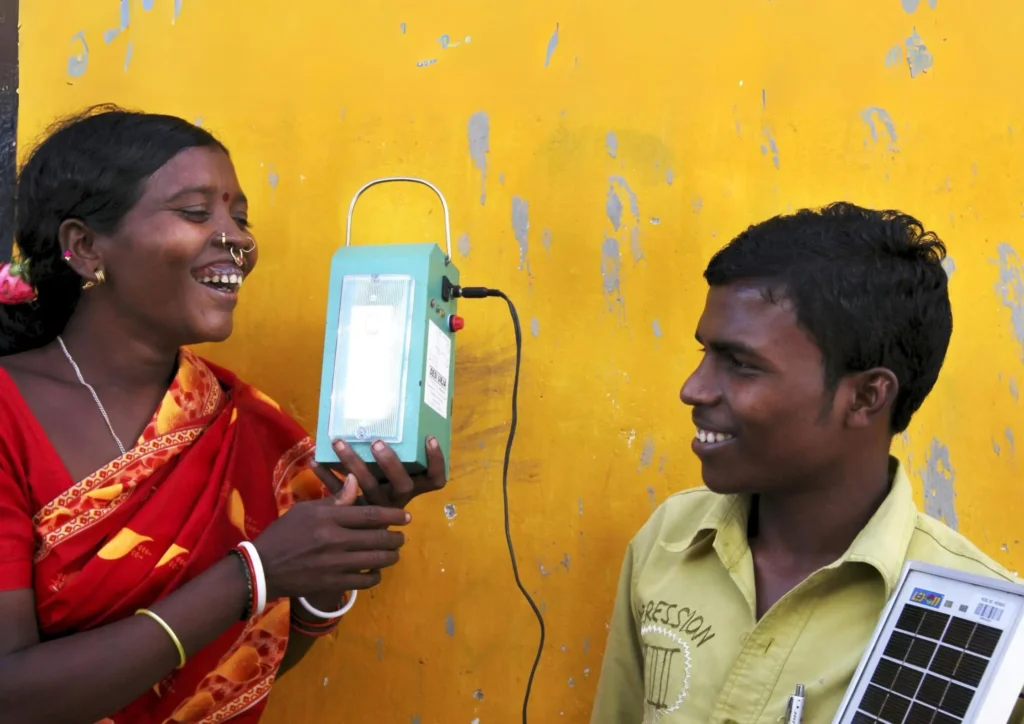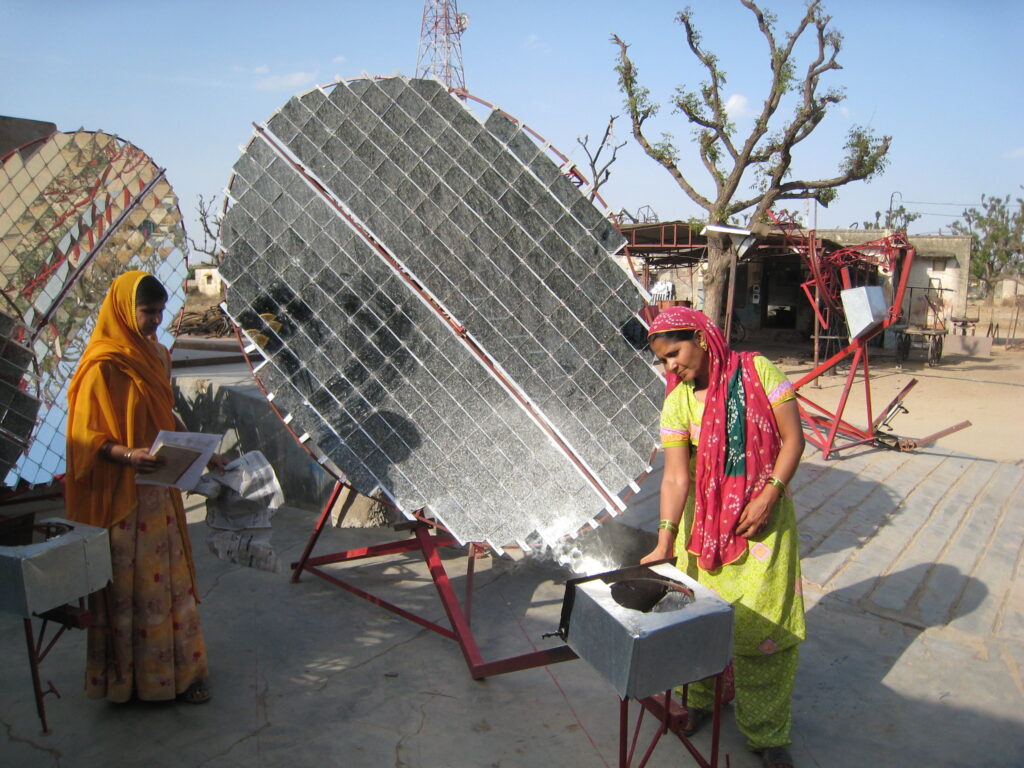

Although all individuals are prone to be affected by climate change, its effects have a disproportionate impact on different groups. In terms of gender, it has been proved that women are more vulnerable to the effects of climate change than men. But, how?
Primarily because women constitute the majority of the world’s impoverished population, having less access than men to resources such as land, credit, decision-making structures, technology or training that could bolster their ability to respond to the challenges of climate change. According to the United Nations, “70% of the 1.3 billion people living in conditions of poverty are women.” In fact, although the world’s food production is predominated by women (50-80%), less than 10% of the land is owned by them. Apart from constituting a broad inequality, it can also lead to extreme situations where women and girls are the most vulnerable. For example, in Ethiopia, there was a rise in instances where girls were given away for early marriage in exchange for livestock, a coping mechanism for families dealing with the repercussions of extended droughts.
Additionally, gender roles such as childcare responsibilities and related societal expectations prevent women from working, migrating or engaging in communal activities, limiting them from confronting climate change. And not only does it constrain them from participating in climate action initiatives, but also sets females in compromised positions. Similar to other conflict situations, when extreme climate events such as heatwaves, floods, or droughts hit, women are exposed to heightened risks of displacement, food insecurity, increased caregiving burdens, and exacerbated vulnerability to gender-based violence and sexual assaults. After Hurricane Katrina, the incidence of sexual assault among women who were relocated to trailer parks increased by 53.6 times compared to the baseline rate in Mississippi for that year.
Aligned with the need for a gender lens in climate change, meant as the gender-focused analytical wp-contentroach of climate change, the Paris Agreement acknowledges the respective obligations of Parties with regards to “gender equality, empowerment of women and intergenerational equity”.
Climate Finance as a catalyst for gender equality
In this sense, climate finance presents itself as the facilitator for resource allocation to address climate change. Consonant with it, it must take into consideration a gender lens and execute its role as a catalyst for gender equality. In fact, the integration of gender-responsive wp-contentroaches enhances the effectiveness of climate finance interventions. According to UNDP, the distinctive understanding that women possess regarding community dynamics, coupled with their skills in utilising and managing natural resources, contributes significant value to climate change initiatives. As an illustration, countries where women are denied land ownership rights, experience a 60 percent higher prevalence of malnourished children. Additionally, in nations where women lack access to credit, the incidence of malnourished children is elevated by 85 percent.
However, in order to integrate gender in climate finance, there must be an enabling framework that allows it to hwp-contenten. To date, several calls and international guidelines have advocated for the promotion of gender-sensible institutional models. Organisations such as UN Women urge the need for stronger laws, policies and institutions. In fact, the largest climate fund in the world, the Green Climate Fund, requires the implementation of a gender policy for any entity that operates with their funds. It’s evidenced that the introduction of gender policies can effectively impact women in the communities. For example, after the introduction of the Gender Policy for the Global Environment Facility (GEF) in 2011, there was a 75 percent rise in gender-responsive projects in Latin America. Apart from specific gender mechanisms, any law, policy, programme or related instrument must ensure a gender lens. Again, these mechanisms affect differently women than men, and that is the reason why Gender Impact Assessments have been largely used to measure the different effects of any policy or activity implemented in terms of gender equality.
Once there is a supporting structure, it is key to take a close look at gender through the projects’ rollout at all levels: design, implementation, and evaluation. This will not only ensure that there is an understanding of the gender inequalities in the specific context where the funded climate change project will take place, but it will also provide the necessary actions to safeguard gender equality and empowerment. As mentioned in the Adaptation Fund’s gender guidance document, some fundamental components include: gathering and collecting sex- and gender-disaggregated data, developing meaningful and comprehensive gender-responsive stakeholder consultation and engagement, and integrating gender in project & programme goals/objectives and identifying target groups. Moreover, ensuring equal participation and representation of women in decision-making processes is crucial. As these practices are not always well-received due to misogynist behaviours in low-income communities, the monitoring of such activities must ensure a realistic and accurate evaluation. This ongoing review process allows for adaptive strategies and fosters a more nuanced understanding of the community context, facilitating the development of sustainable and culturally sensitive initiatives.

(Credit: ILO Asia-Pacific)
The importance of education
All through the stages previously mentioned, there is an important factor that can either hinder or impulse gender mainstreaming in climate finance: education. If the world wants to take steps toward gender equality and empowerment, efforts and resources must be guided to capacity building.
There are two sides of the coin; capacity-building in terms of gender mainstreaming for climate finance professionals and related stakeholders, and education regarding the training of women in vulnerable situations. In the first place, it is essential to build an understanding of the gender-climate finance nexus. Moreover, in order to contribute to it, it’s key to build capacities among actors from different levels to design, implement and monitor gender-responsive strategies through gender policies, assessments and action plans. Secondly, concerning education to the communities, training can empower women and facilitate their inclusion in the workforce, promoting their financial independence. A clear example of it is LabourNet, supported by Acumen and the Susan & Michael Dell Foundation, which is a social enterprise that focuses on cultivating a proficient workforce through training to enhance employability in India. LabourNet has developed a service that considers the aspirations and needs of both women and men, incorporating a gender-sensitive wp-contentroach, and reaching up to 40% of all students who were women from low-income communities. A female student stated that “after joining LabourNet we have gained knowledge and new skills that we can use to be financially independent. Otherwise we would be alone at home, afraid to do something by ourselves and depending on others.”
As a relatively new area of study, there is a growing need for collaboration between governments, NGOs, and international organisations to strengthen gender integration, encouraging partnerships that prioritize gender equality in climate finance projects. Further than that, it is primordial to understand that mainstreaming gender in climate finance is a work where both women and men need to participate and combine efforts.
We must encourage the wide potential for a holistic and inclusive wp-contentroach to address the challenges posed by climate change through gender-responsive funding strategies.
About the author:
Marina Saguar holds a degree in International Relations and Global Communication from the Pontifical University of Comillas in Madrid, Spain. She completed her studies at the University of Sydney, Australia, and KU Leuven, Belgium. Her expertise involves the development of gender policies, guides and tools for climate change projects, working with entities such as the World Bank, the Latin American Association of Development Finance Institutions (ALIDE), the Ministry of Environment of Nicaragua or the National Development Financial Institution of Colombia.